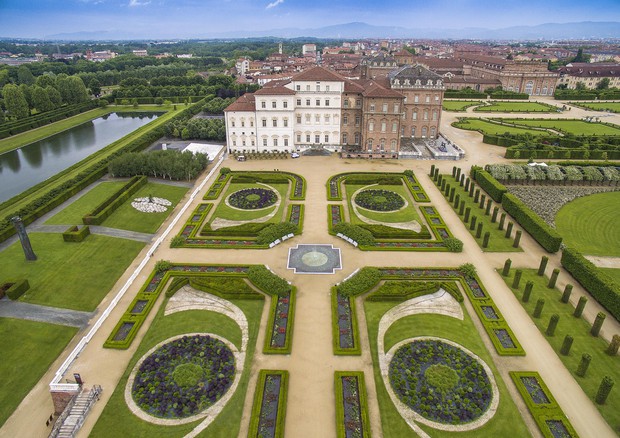
What to see in Valle d’Aosta?
The smallest region in Italy between nature, history, tradition and good food!
This is a route through the Aosta Valley, in the Italian Alps combining nature, culture and gastronomy.
An itinerary that visits castles and forts such as that of Bard or the Roman remains of Aosta; climb at 3,462 m to see Mont Blanc; taste the typical products of the region and advise you on excursions near Monte Rosa.
Do you want information about a route through the Italian Alps?
Keep reading!
Italian Alps in Aosta Valley
The Aosta Valley is the smallest region in Italy, made up of 13 side valleys. It is located in the Alps and surrounded by the highest mountains in Europe (Mont Blanc 4,810 m and Monte Rosa 4,634 m).
This valley was inhabited by the Salassi (Celto-Ligurians), Romans, Burgundians and Longobards (Germanic) and Carolingians until the Royal House of Savoy emerged.
The peaks of Mont Blanc, the Cervino and other snow-covered giants make the Italian region of Valle d’Aosta a paradise for skiers and hikers.
From Courmayeur to Chamonix a skiing experience awaits you along the Vallée Blanche.
On the way back, relax in the relais with spa with swimming pool, super-technological gyms, which offer intimacy and exclusivity in an enchanting environment! The tourist resort of Courmayeur offers adventures on ice all year round, thanks to the Giant’s Tooth Glacier.
The oldest national park in Italy, the Gran Paradiso, is also located in the Aosta Valley, as are numerous castles. A cable car ride from La Palud takes passengers over the mountains to Chamonix, France, offering a bird’s-eye view of the breathtaking landscape.
Italian Alps and Gressoney Valley. As you go through more days route the Aosta Valley, you will be able to realize the different cultures that inhabited this region, both in food and architecture. The vestiges of the Roman era can be seen from Pont-Saint-Martin to Augusta Praetoria, the current city of Aosta.
Roman monuments in Aosta: Augusta Praetoria, Door To The Alps
Ancient Roman roads, a crumbling theatre, bridges and aqueducts, city walls and old crypts are all in evidence throughout the Aosta Valley.
- Arch of Augustus:This monument is Aosta’s landmark. It was built in 25 BC, the year in which Augusta Praetoria was founded, in honour of Emperor Augustus’ victory over the Salassi.
- Porta Praetoria: This was once the main entrance to the town. It has two parallel arches 12 metres apart, each with three passages: a central one for vehicles and two side ones for pedestrians.
- Roman theatre: The impressive 22-metre high southern façade can be seen from the theatre which would have held three or four thousand spectators.
- The city walls of Augusta Praetoria reached around 7 metres in height and delineated a rectangle of 724 x 572 metres.
- Roman bridge: This single arch bridge was built at the end of the first century BC over the river Buthier. which changed its course a few centuries after due to a flood. [FOTO]
Visit Fort Bard
The Fort Bard is formed of three main defence stations positioned at different levels upon a high imposing rock spur, the lowest at 400m above ground and the highest at 467m. The Ferdinando Opera is the defence structure at the bottom, the Vittorio Opera in the middle, and the Carlo Alberto Opera at the top. There are a total of 283 rooms in the entire fortress.
Almost intact from the moment of its construction, Fort Bard represents one of the best examples of early 1800 military strongholds.
The Valle d’Aosta and Its Castles
In the Middle Ages, the Aosta Valley was a compulsory passage towards Alpine passes. Thus, toll collections were an important source of power and income. Since the Aosta Valley wasn’t directly controlled by any authority, it was easy to take the land and appoint yourself as its lord; therefore, local nobles moved away from the towns, in search of land where they could extend their domains. Castles, towers and fortified houses arose on unaccessible elevations to dominate vast stretches of land from above.
Typical examples of fortifications from the 11th and 12th century are Graines Castle in Brusson, the castle of Cly in Saint-Denis and Châtel-Argent castle in Villeneuve. Their chapels show the extreme simplicity of Romanesque religious architecture.
The evolution of defensive castles into mansions In the following centuries, castles gets more complex. It’s the case of Ussel castle and Verrès castle.
Late Gothic Fénis castle and Issogne castle complete the evolution of defensive castles of the Aosta Valley into urban mansions.
4 local foods & drinks you have to try in Aosta Valley
- Lard d’Arnad: The aromatic Aosta Valley Lard is an exquisite cold cut traditionally produced in the Alpine town of Arnad, where the tradition of pig farming dates centuries back. One of the distinctive features in the production of Lard d’Arnad is the animals’ diet, consisting mainly of chestnuts, roots and tubers found in the Valley.
- Fontina cheese: Produced in the Aosta Valley since the 1100s, Fontinais a semi-cooked cheese traditionally made with raw cow’s milk of the Valdostana Pezzata Rossa cattle breed. Depending on the length of maturation, the texture of Fontina can vary from semi-soft to firm, while the flavor ranges from mild, sweet, and nutty to robust and quite tangy.
- “Crespelle alla Valdostana”: Is an Italian specialty that consists of savory, stuffed crêpes smothered in gooey Fontina cheese and béchamel sauce. The batter for the crêpes is made with a combination of flour, milk, eggs, melted butter, salt, and pepper, while the filling typically includes diced or sliced Fontina cheese, cooked ham (such as gran biscottoham), and (sometimes) mushrooms.
- Aosta valley DOC wines: Valle d’Aosta boasts a climate particularly suited to the cultivation of vines since Roman times, of which there are numerous testimonies.
Today the denomination of Controlled Origin D.O.C “Valle d’Aosta – Vallée d’Aoste” is represented by 7 sub-denominations per area and 19 sub-denominations per vine. Among the DOC Valle d’Aosta wines we recommend: Blanc de Morgex et de La Salle and Chardonnay among the whites and Donnas Picotendro, Syrah and Torrette among the reds.
Production is limited, the result of often “heroic” viticulture, where the use of technologies is limited by the conformation of the territory.
Taste these wines with gastronomic excellences and you will find the authenticity of the taste that has been handed down for a generation, the best that the Aosta Valley can offer!
Need some inspiration for your next travel project? Choose ELT!
Whatever your ideals of a journey, just focus on the emotions you want to live.
We’ll take care of the rest.
ELT offers:
- unconventional itineraries,
- thematic tours,
- charming accommodations,
- local flavors with the authentic taste
Our tailor-made services allow you to relax and have an exclusive luxury vacation.
ELT offers solutions for any travel need: leisure, business or blesiure tourism!
Contact Elite Luxury Tours

